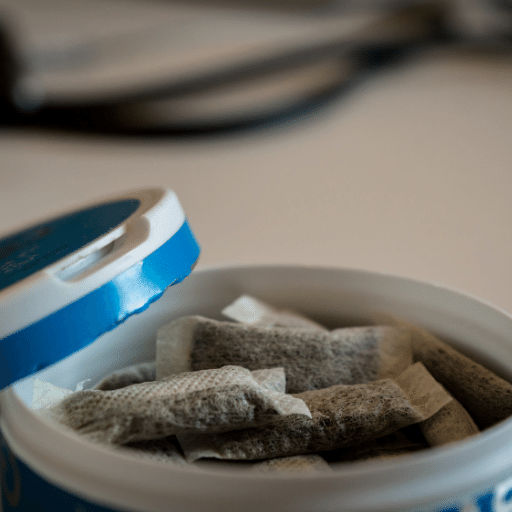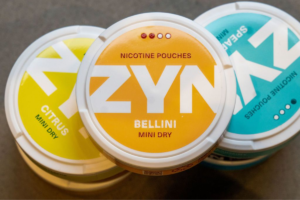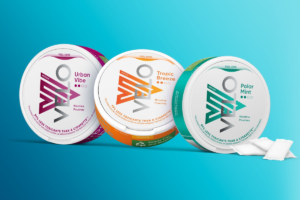The area of harm reduction is particularly fascinating with snus and nicotine pouches being the most intriguing. Snus is placed underneath the upper lip, allowing for absorption of nicotine without any burning thus significantly distinguishing it from conventional ways of smoking. Conversely, this case is similar to nicotine pouches, which also take a similar route but do not use tobacco; they use fake tobacco or derive synthetic nicotine. Both these products have been considered as options that are less harmful for people looking for smoking satisfaction without having to go through the risks involved in smoking. This article aims at breaking down the scientific basis, usage trends and regulatory issues about snus and nicotine pouches so as to provide an allinclusive view regarding their role within harm reduction strategies.
What Are Nicotine Pouches and How Do They Differ from Traditional Snus?
Nicotine pouches, in essence, are small nicotine-laden bags that contain no tobacco and usually contain either artificially made or pure nicotine extract from tobacco leaves. They are intended to be placed under the upper lip like traditional snus from Sweden. Nevertheless, these pouches have no tobacco leaves; hence they can be regarded as cleaner alternatives with less likely health hazards linked to smoking tobacco.
Nicotine Pouches Vs Swedish Snus 101
- Content: Nicotine pouches are made up of nicotine, flavorings, and filler that is plant-based while Swedish snus contains tobacco, nicotine, water, salt and spices.
- Usage Method: Both are inserted under the upper lip; nevertheless, the Snus has a peculiar taste of tobacco as due to what it’s made with.
- Health Implications: The absence of tobacco in nicotine pouches may reduce the risk of tobacco-related diseases although nicotine itself entails health risks.
Implications for Using Nicotine Pouches versus Snus
The main difference in health implications between these two products is that one contains tobacco. Among these thousands of chemicals found in tobacco, some are carcinogenic. While both products deliver nicotine which is additive and can have its own health consequences; however, Snus by containing tobacco exposes users to increased risks including oral cancer, gum disease and tooth loss. For instance, though without containing any tobacco substance; nonetheless, it does not mean that using this type of drug is safe as there still exist numerous dangers linked with overdose symptoms which include heart attack or stroke as well as using more than prescribed limit being harmful much like any other pain reliever available over-the-counter.
Popularity and Accessibility of Nicotine Pouches Versus Snus
- Popularity: The popularity for both these products has been growing with emphasis on nicotine pouches by those who want a no-tobacco way to get nicotine. Sweden remains a big user of Snus while other countries have seen only small markets.
- Accessibility: As such availability varies with region due to different regulations enforced. For instance in most parts sales of snuss within EU states has been banned except for Sweden while nicotin pouchs face fewer restrictions from authorities.
- Regulations: Regulation applies to both but being a new invention some jurisdictions consider it as uncertain criminal act thus affecting its access or availability.
In summary, however, though both nicotine pouches and Swedish snus are alternatives to cigarette smoking; they differ widely in terms of their health implications, popularity as well as accessibility.
The Role of Snus and Nicotine Pouches in Tobacco Harm Reduction
Tobacco harm reduction practices are instrumental in reducing the public health impact of smoking. Substitutes such as snus and nicotine pouches have potential to considerably lower the incidence of diseases related to smoking. However, there is great enthusiasm and skepticism about incorporating smokeless tobacco products like Snus into harm reduction policies necessitating a detailed enquiry.
Analyzing the Effects of Smokeless Tobacco on Public Health
Smokeless tobacco’s impact on public health is diverse. Although it is true that products like Snus carry less risk than traditional cigarettes due to no combustion and therefore no harmful smoke, they do not come without any consequences for health. Some of these include:
- Risk Reduction: Smokers who switch to smokeless tobacco products can potentially lower their risk of smoking-related diseases.
- Nicotine Addiction: Both snus and nicotine patches support nicotine addiction thus undermining cessation efforts and promoting continued use of tobacco in some way.
Snus as an Alternative to Cigarettes: Benefits and Controversies
Among other things, several benefits surround the suggestion that Snus could be used instead of cigarettes:
Benefits:
- Reduced Harm: Snus users are exposed to fewer carcinogens and toxicants than smokers.
- Helping Quitting: Anecdotally, some smokers have successfully used Snus as a stepping stone to quit tobacco altogether.
Controversies:
- Health Risks: Despite reduced risks, snus use does not come without health challenges such as oral cancer and cardiovascular diseases.
- Youth Initiation: There are concerns about young people especially non-smokers starting with Snus with likelihoods leading up to smoking.
Global Perspectives on Harm Reduction Strategies Involving Snus
Globally, however, incorporation of Snus in harm reduction strategies is markedly divergent reflecting variations in public health policies, cultural attitudes as well as regulatory environments:
Supportive Environments; It has been recognized by some regions as a valid component for comprehensive tobacco harm reduction strategies.
Regulatory Challenges: In jurisdictions where Snus is heavily regulated or banned, its role in harm reduction is naturally limited or nonexistent.
In summary, the introduction of Snus and similar products for tobacco harm reduction seems hopeful; however, it requires proper assessment on how to balance between reducing the harm in current smokers and discouraging new nicotine dependencies.
Comparing the Health Risks: Snus vs. Cigarettes
Understanding the Cardiovascular and Cancer Risks of Snus Use
The medical effects of snus use have mainly focused on cardiovascular diseases and cancer. Unlike cigarette smoke, which gets chemicals through combustion into the body, nicotine is delivered to the mouth through absorption where snus is concerned. Major concerns about nicotine relate to:
- Cardiovascular Diseases: Nicotine is a stimulant present in tobacco products such as Snus that increases heart rate and blood pressure. Consequently, this may be hazardous for cardiovascular illnesses. On the other hand, compared with traditional smoking, there are less risks because there is no inhalation of smoke when using Snus. However, research implies that its risk of developing it is lesser than smoking.
- Cancer Risks: The most controversial claim about Snus is its link to oral cancer. The data presents a complex picture; snus does not involve burning tobacco, thus users are not exposed to the same level and range of carcinogens as smokers do. Although it is unquestionable that lower cancer risk exists with snus use relative to smoking it must be noted “lower risk” should never be seen as “no risk”.
The Impact of Nicotine Delivery in Snus Compared to Cigarettes
Nicotine delivery distinguishes health indications between Snus and cigarettes significantly:
- Direct Absorption: Through absorption in the mucous membrane of mouth without burning it or vaporizing it like vaporizer pens do; hence avoiding many harmful combustion byproducts associated with cigarette smoking.
- Controlled Dosage: In contrast to cigarettes which have different amounts of nicotine depending on inhalation depth and frequency amongst others factors per use (PMTA), the design allows for more controlled intake with potential lower mean exposure levels.
World Health Organizations’ Stance on Snus and Cigarettes
Snuss is considered a tobacco product by World Health Organization (WHO) among other global health bodies globally which urges caution towards its consumption including:
- Harm Reduction: Snus is lesser harmful than cigarettes but no tobacco product is safe.
- Regulatory Frameworks: Strict controls to avert young people from starting tobacco use and deal with the potential decreased albeit present risks of snus and other similar products.
- Research and Surveillance: Ongoing research on Snus, other new forms of tobacco use (e.g. e-cigarettes) which help in regulation of health policy and recommendations should be encouraged by WHO.
In conclusion, although Snus might involve fewer health problems than cigarettes; yet, these risks are multi-faceted and full of nuances that should be taken into account by the consumers as well as policy-makers. Harm reduction must be done in an environment free from starting to smoke and prior addictions to nicotine shall be low.
Can Nicotine Pouches Serve as an Effective Cessation Tool?
An Evaluation of Nicotine Pouches’ Effectiveness in Helping Smokers to Quit
Nicotine pouches are currently being explored as an option for people who want to quit smoking. They can be looked at in terms of their efficiency in helping individuals quit smoking when compared with traditional nicotine replacement therapies (NRTs) that include; gum, patches, lozenges, inhalers and sprays. The main areas for consideration are as follows:
- Nicotine Delivery: Unlike combustible cigarettes, which release nicotine through burning tobacco, nicotine pouches and other NRTs provide controlled doses of the substance that address withdrawal symptoms without combustion by-products harmful to health.
- User Experience: Other than providing discrete usage not provided by options such as patches or inhalers, it is possible that the use of nicotine pouches may lead to higher rates of adherence among users who are trying to quit smoking.
- Accessibility and Cost: The effectiveness of nicotine pouches also depends on access and cost relative to other cessation methods where better accessibility may facilitate user engagement and enhance the levels of quitting success achieved by the population.
Personal Journeys from Smoking to Using Nicotine Pouches
Stories from different smokers about switching from smoking cigarettes to using nicotine pouches add more weight on what they can do as a tool for quitting. These stories often highlight:
- Reduced Health Risks: Many people mention improved physical fitness and a decrease in signs related to illnesses caused by smoking.
- Social Acceptability: A number find this kind of products advantageous due to their low profile nature enabling them use it where cigarette smoking or vaping is not allowed or socially unacceptable.
- Behavioral Transition: The use of nicotine pouches provides an equivalent craving for oral fixation like cigarettes do which has been identified as a significant factor for easy movement away from smoking.
However, it is worth emphasizing the fact that just like any other NRTs, nicotine pouches serve only as cessation aids but not stand alone solutions. Thus, a comprehensive support system involving counselling and behavioural therapies is crucial in order to maximize their effectiveness. Furthermore, ongoing research and surveillance are necessary for continued evaluation of the long-term impacts as well as efficacy of the nicotine pouches for smoking cessation strategies.
Legal and Regulatory Perspective on Snus and Nicotine Pouches
The controversy concerning snus ban in certain areas
Ban on Snus has been a subject of heated debate among public health professionals, regulators and consumer groups especially within the European Union (EU) excluding Sweden. Some major contentions are:
- Public Health Debate: The EU banning snus may prevent smokers trying to quit from having access to a safer alternative. This is supported by some research showing that snus is less harmful than smoking tobacco.
- Regulatory Inconsistency: While there is no doubt about the health risks associated with traditional cigarettes, such products remain legal whereas snus is banned indicating gaps in regulatory approaches towards tobacco and nicotine products.
- Risk Reduction: Those supporting Snus and nicotine pouches have promoted them as harm reduction options for cutting down on smoking-related health risks.
Nicotine Pouches Sale and Use Regulations
The sale, marketing, and use of nicotine pouches are influenced heavily by jurisdictional differences in their respective regulatory environments:
- Nicotine Content: Some regions restrict the sale of nicotine pouches based on how much nicotine they contain with maximum allowable levels as stipulated by regulation.
- Age Restrictions: Almost all markets have age restrictions aimed at keeping minors away from products like nicotine pouches.
- Marketing and Advertising: There are usually prohibitions targeting minors or describing them as “healthy” alternatives to smoking in relation to how nicotine pouches can be marketed legally.
Prospects for Legal Changes Impacting Public Health in Future
The future of legal changes depends on research into the health effects of this new product and wider public policies on health:
- More Research: A better understanding of long-term effects of using nicotine pouches may affect regulations leading to relaxed restrictions or rethinking existing bans such as those placed on snus.
- Public Health Strategies: A change in policy towards risk-reduction approaches might create more favorable conditions for such products like these compared to other more damaging forms of smoking habituation including those enforced upon it.
- Consumer Demand and Advocacy: [The word “demand” here looks like a repetition]. Increasing consumer demand and public health group advocacy can change legislation and result in changes to the legal status of snus and nicotine pouches to reflect a more nuanced understanding of their risks and benefits.
This area will remain one of the most dynamic regions for nicotine pouches as well as snus, with ongoing research, public health policies, and changing societal attitudes towards smoking cessation/harm reduction.
References
-
“Tobacco-Free Nicotine Pouches and Their Potential Contribution to Tobacco Harm Reduction: A Scoping Review” is an academic article published in the Cureus Journal of Medical Science1. The study explores the potential of nicotine pouches as a harm-reduction alternative for tobacco users. It also discusses the nicotine content extracted from General Snus 8mg pouches, suggesting these products as a potentially reduced harm alternative. This source is credible and relevant as it provides scientific evidence.
-
“Designing Studies to Inform Tobacco Harm Reduction: Learnings From an Oral Nicotine Pouch Actual Use Pilot Study” is another peer-reviewed article in JMIR Formative Research2. The study is focused on designing studies that can provide more information about tobacco harm reduction, with a particular focus on oral nicotine pouches. The source is credible due to its scientific approach and relevance, as it adds to the knowledge base about snus and nicotine pouches as harm-reduction alternatives.
-
“Chemical characterization of tobacco-free “modern” oral nicotine pouches and their position on the toxicant and risk continuums”—Published in Drug and Chemical Toxicology, this research article describes tobacco-free modern oral nicotine pouches. It discusses their role in tobacco harm reduction. This source is highly credible because it is scientific and extremely relevant to the topic, as it directly analyzes the product in question.
Frequently Asked Questions
Q: What is Snus, and how is it different from regular tobacco products?
A: Snus is a form of smokeless tobacco placed under the upper lip. It is different from regular tobacco products as it does not require chewing or spitting, making it a convenient and discreet option for nicotine consumption.
Q: Does Snus contain nicotine and tobacco?
A: Yes, Snus contains both nicotine and tobacco. However, it is essential to note that the levels of nicotine in Snus can vary depending on the brand and type.
Q: What are the health risks associated with snus use?
A: Epidemiological evidence relating Snus to health has concluded that Snus use carries an overall lower risk compared to smoking cigarettes. However, emerging and newly identified health risks are associated with Snus, particularly in long-term users.
Q: Is Snus considered a harm-reduction alternative to smoking?
A: Studies have suggested that Snus can be a harm-reduction alternative to smoking cigarettes. Some scientific committees have recognized Snus for reducing tobacco harm, especially in Sweden’s public health efforts.
Q: What is the association between snus use and nicotine pouches?
A: Nicotine pouches or Snus are both smokeless tobacco products that are used orally for nicotine consumption. While they may differ in form and packaging, both products provide users with a similar experience of nicotine delivery without the need for smoking.
Q: Are there any restrictions on the sales and marketing of Snus?
A: The sale and marketing of snacks are regulated in many countries. For example, the European Union has banned the sale of snacks in all member states except Sweden. However, Snus can be legally sold in the United States and other countries.
Q: What are the effects of long-term snus use on individuals?
A: Long-term snus users may experience oral health issues such as gum disease and tooth loss. Additionally, continued use of Snus can lead to nicotine addiction and potential health risks associated with tobacco consumption.
Q: What are nicotine pouches or Snus, and how are they used?
A: Nicotine pouches or Snus are forms of smokeless tobacco products. Nicotine pouches generally do not contain tobacco leaves but are filled with nicotine and other ingredients. On the other hand, Snus is a moist powder tobacco product popular in Sweden, used under the upper lip. Unlike chewing tobacco, Snus does not require spitting. Both are used as alternatives to smoking cigarettes, offering oral nicotine satisfaction.
Q: How have epidemiological studies concluded that snus use affects public health in Sweden?
A: Epidemiological evidence relating Snus to health outcomes in Sweden indicates a complex relationship. Public health in Sweden has seen benefits in the form of reduced cigarette smoking rates, as some smokers switch to Snus, a product considered less harmful. The scientific committee on emerging and newly identified health risks has acknowledged that while smokeless tobacco use, including Snus, carries health risks, the prevalence of smoking-related diseases is lower in populations with higher rates of snus use.
Q: Can the use of snus or nicotine pouches lead to smoking cigarettes?
A: Research on the gateway effect of SNS use leading to cigarette smoking provides mixed results. While some fear that initiating nicotine use through snus or nicotine pouches may lead to smoking cigarettes, others have suggested that Snus serve as a smoking cessation tool. The association between snus use and transitioning to smoking is not conclusively established, with some studies showing a low risk of transition.
Q: Are there emerging and newly identified health risks associated with Snus?
A: While Snus is often promoted as a harm reduction strategy, emerging research points to newly identified health risks. These include potential increases in the risk of certain cancers and cardiovascular diseases. However, it is generally concluded that Snus use carries an overall lower risk profile compared to smoking cigarettes, though it is not without risk.
Q: How does the nicotine and tobacco content in Snus compare to other tobacco products?
A: Snus contains nicotine and tobacco, similar to other tobacco products, but the manner of its use leads to different exposure levels. The smoking in Snus is pasteurized, which lowers the levels of some harmful chemicals found in other forms of tobacco use. However, Snus still delivers substantial nicotine doses, making it practical for oral use but also carrying addiction potential.
Q: What is the evidence relating Snus use to harm reduction in tobacco consumption?
A: The evidence relating Snus use to tobacco harm reduction hinges on the lower levels of harmful substances produced and consumed with Snus as compared to smoking cigarettes. Studies in Sweden have indicated that switching from cigarette smoking to snus use can lead to improved health outcomes, suggesting Snus for tobacco harm reduction purposes. However, health professionals stress that while Snus may be less harmful than cigarettes, it is not a completely safe alternative.
Q: How is the sale of Snus regulated compared to other nicotine products like nicotine patches or electronic cigarettes?
A: Due to its tobacco content, snus sales are regulated differently across regions. For instance, within the European Union (excluding Sweden), the sale of snacks is banned, while products such as nicotine patches or electronic cigarettes are widely available. In places where it is legal, like Sweden, Snus is subject to regulations that cover packaging, sale, and distribution, similar to those of other tobacco and nicotine products.
Q: What are the social perceptions of snus users compared to smokers?
A: Social perceptions of snus users versus smokers vary by region and culture. In Sweden, where snus use is a part of cultural identity, snus users may not face the same social stigma as smokers. Conversely, in areas where Snus is less known, users may experience more skepticism or negative perceptions. Overall, snus use tends to be viewed more favorably in regions where it is an established alternative to smoking cigarettes.
Recommended Reading: Camel Snus Pouches












